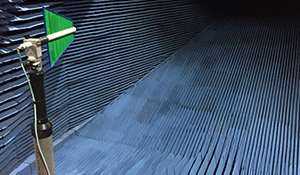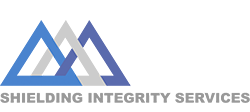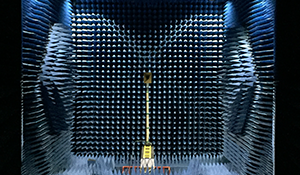VSWR Free Space
This type of anechoic performance measurement has been performed by SIS at many facilities across the world. Our quiet zone measurement systems consists of a two-axis track and rotary table which automatically captures a repeatable series of RF reflectivity measurements in the subject chamber.
The data is captured using a spectrum analyzer or network analyzer and stored to a portable computer for processing and analysis using proprietary operation and measurement analysis software. Measurement and analysis resolution of 0.01 db is typical.
This measurement is designed to detect reflected radio waves which are indirectly entering the quiet zone from the source antenna. Specified chamber performance is verified and absorber design limitations are detected as a result of this stringent and effective type of measurement.
The standard method for the measurement of anechoic performance is described in IEEE Standard 149-2021.
Variations of the test are described in and supported by the following documents:
• University of Michigan Report 5391-1-F: “A Study of VHF Absorbers and Anechoic Rooms”
• ETSI 300 328-1 V1.7.1(2006-05): “Electromagnetic Compatibility and Radio Spectrum Matters (ERM)”
Standard capabilities include but are not limited to measurements from 30 MHz through 40 GHz with specific discreet frequencies above 40 GHz up to 100 GHz.
Time Domain
Time Domain Measurement techniques are performed using radar cross section (RCS) and other innovative methods when the typical free space methods are not practical for determining absorber performance in very specific areas of the chamber.
This measurement is designed to eliminate the confusion of reflected amplitudes as a function of time and distance by “gating” out irrelevant data. The return loss is directly tied to the absorber performance at the specific point of measurement and the elimination of other factors.

